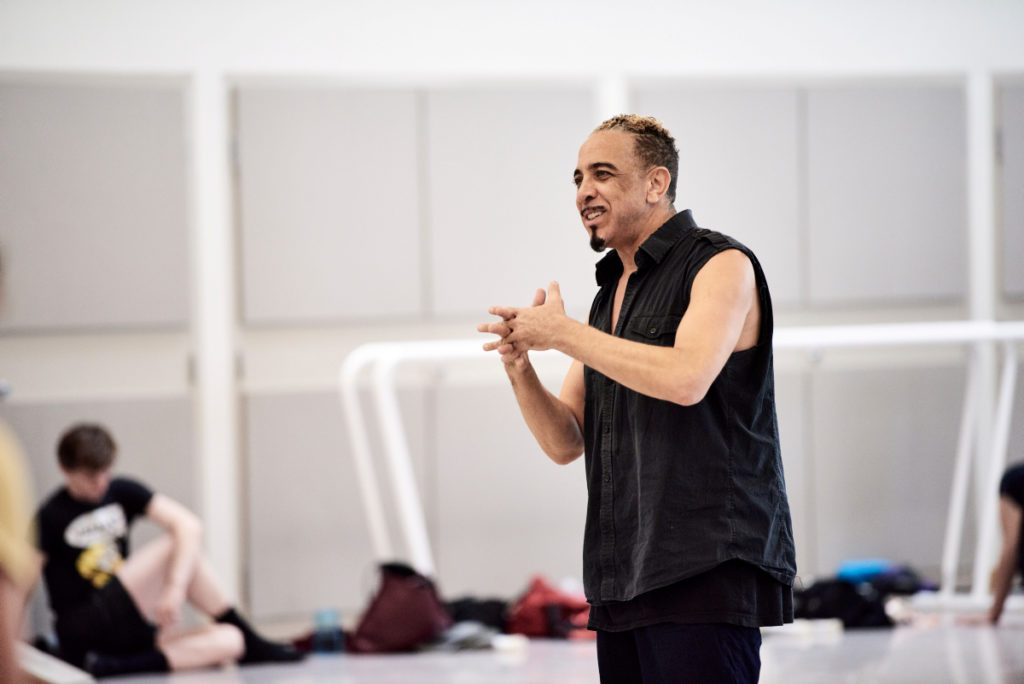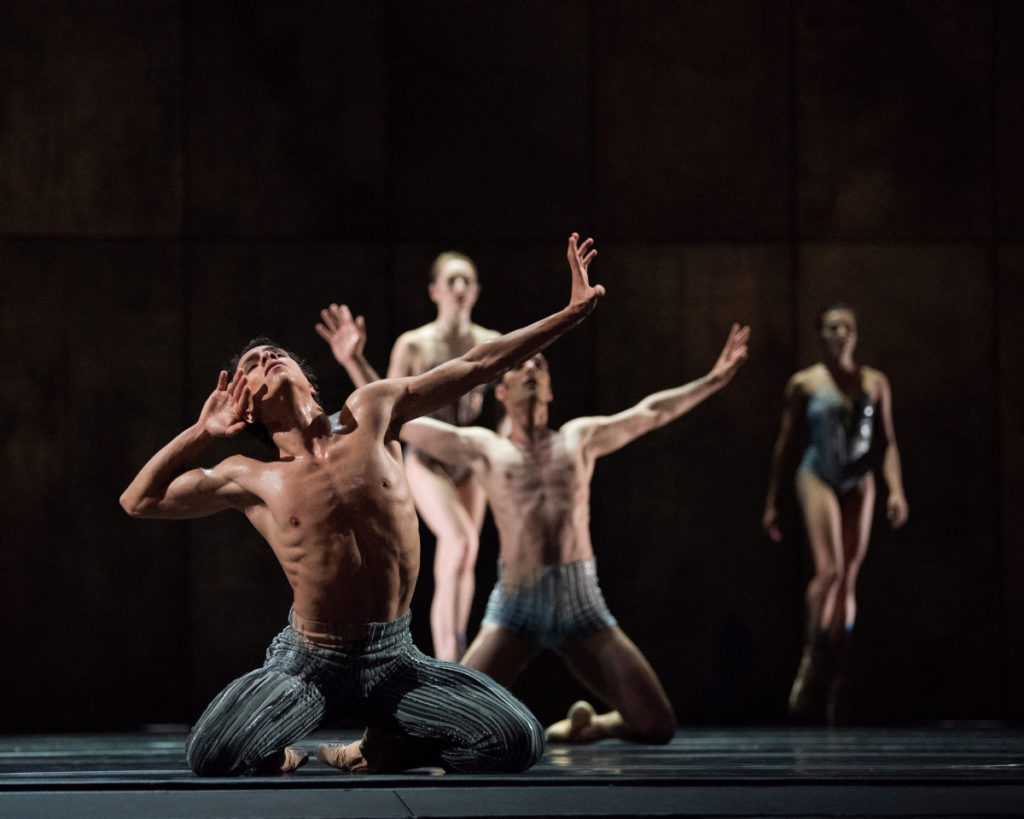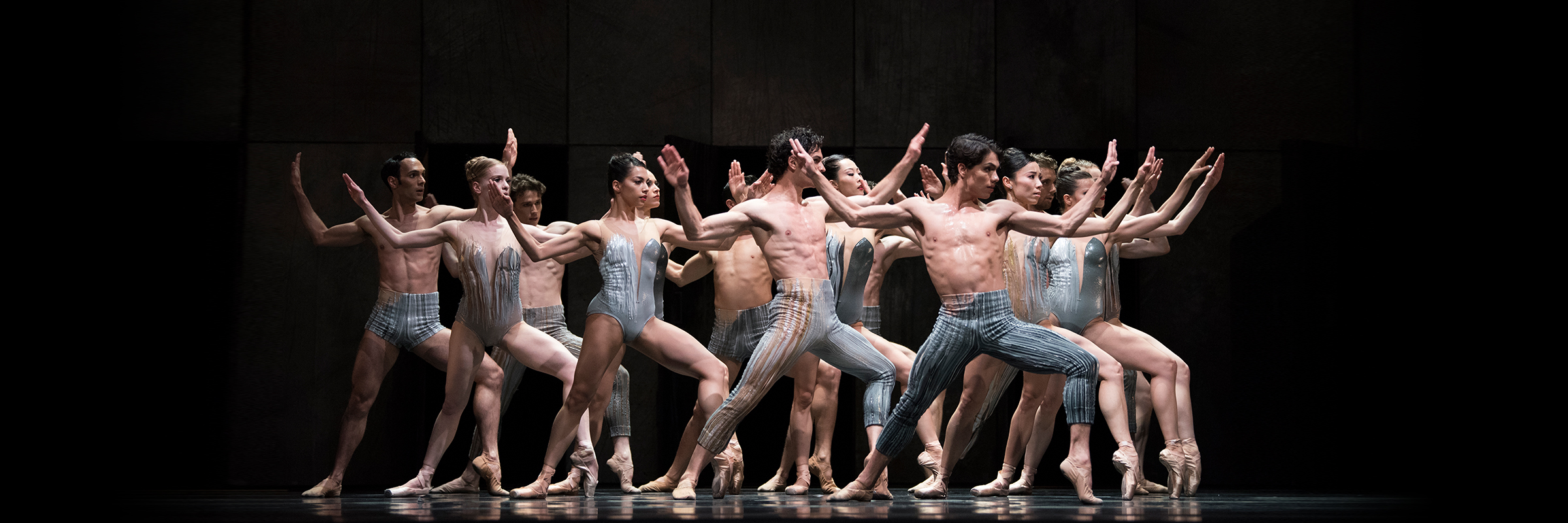About Let’s Begin at the End
Love, Connection, and Discord
When choreographer Dwight Rhoden began rehearsals for LET’S BEGIN AT THE END, he told the dancers they were going to make an abstract piece about “love, and connection and disconnection, discord and harmony.” Early on, though, the ballet developed a subtle narrative around the lead couple and an invading presence. Though there’s no actual story, relationships shift—from giving to confining, communicating to repressing—and the ballet’s intensity builds to an emotional punch that we never see coming.

“I knew we were going to explore the ups and downs, the ins and outs, the roller-coaster of love,” says Rhoden, who is co-founder and co-artistic director of Complexions Contemporary Ballet with Desmond Richardson. “I knew we were going to explore dark areas of love, things that divide us and things that bring us together. But I never pretend that I have the best ideas. I want the dancers to influence and also inhabit the journey. And if they can do that, then it’s golden.”
In this case, his mind was made up—he would make a ballet about love, for seven couples. But Esteban Hernandez kept pulling Rhoden’s focus, and suddenly his ballet was about seven couples plus one. This solo man could be a real person, or he could be a force, a representation of the lead couple’s conflict or inability to communicate. The other six couples are refractions of the lead couple, embodying love’s complexity and differing perspectives. To amp up that idea, Rhoden separates the dancers by gender at times. “It’s not so much about men and women as it is about differences of opinion,” he says. “I’m making the most out of the idea that two people don’t always speak the same language, even if they have been together forever.”

The set illustrates this divide. Seven doors, when closed, form a wall that divides the offstage area—what Rhoden calls a place of refuge—from an area “where they actually have to deal with whatever is going to happen in life,” he says. The wall, of course, is symbolic, as are the doors—think of them as portals and they become as much mental as physical. When the dancers emerge from upstage—the only entrance possible—the image is one of thoughts and feelings emerging from the depths of consciousness.
Rhoden choreographs in a lush style, embellishing ballet steps with movements that convey emotion via both action and expression. “When you sink your abdominals into the back of your spine [in a contraction], there’s an emotion associated with that,” he says. “When you arch your back, there’s another emotion.” He points out that his steps could be done without the movement of the spine he asks for, but they would lose expressiveness. “I’m asking [the dancers] to round and then re-stretch and extend; I think that has depth to it.” Rhoden says he loves classical ballet and that’s why he works in this world, “but I primarily was a contemporary dancer. I think the melding of those worlds is one of the most beautiful and interesting things. I think it’s where we are.”
by Cheryl A. Ossola
Header Image: San Francisco Ballet in Rhoden’s LET’S BEGIN AT THE END // © Erik Tomasson



